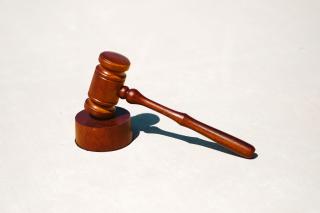Litigation
Employers Can Face Direct and Vicarious Liability Claims, Even if Course and Scope Is Stipulated, High Court Rules
The Louisiana Supreme Court rejected the "stipulation rule" in vicarious liability lawsuits.

By Bradley C. Guin
3 min read
On June 29, 2022, the Louisiana Supreme Court ruled in Martin v. Thomas, 21-01490 (La. 2022), ___ So. 3d ____, 2022 WL 2339095, that a plaintiff “may pursue both a negligence cause of action against an employee for which the employer is vicariously liable and a direct claim against the employer for its own negligence in hiring, supervision, training, and retention as well as a negligence entrustment claim,” even if the employer stipulates that the employee was in the course and scope of employment at the time of the injury. Id. at *1. In Martin, the plaintiff alleged that he was injured in an automobile accident. He sued the other driver for negligence and the driver’s employer for negligent hiring, supervision, training, retention, and entrustment. The employer stipulated that the defendant driver was in the course and scope of employment and subsequently moved for partial summary judgment, seeking dismissal of the negligent hiring, supervision, training, retention, and entrustment claims. The trial court granted the motion, the Louisiana Second Circuit Court of Appeal affirmed, and the Supreme Court granted a writ of certiorari to review the judgment.
On review by the Supreme Court, the defendants argued that Louisiana jurisprudence prevents a plaintiff from maintaining both a negligence claim against an employee and a separate negligence claim against the employer if the employer stipulates to the fact that the employee was in the course and scope of employment. This “centuries-old tort rule” is known as the “stipulation rule.” Natalie R. Earles, Stipulating Vicarious Liability to Avoid Direct Negligence Claims: Why This Relic of the Past Should be Abandoned in Louisiana, La. L. Rev. Lagniappe (Oct. 27, 2021), https://lawreview.law.lsu.edu/2021/10/27/stipulating-vicarious-liability-to-avoid-direct-negligence-claims-why-this-relic-of-the-past-should-be-abandoned-in-louisiana/. “The rule provides that when an employer assumes vicarious liability for its employee’s negligence, the plaintiff may not pursue additional theories of liability against the employer.” Id.
After acknowledging that the case “present[ed] an issue of first impression,” the Supreme Court rejected the stipulation rule as incompatible with Louisiana law. Martin, 2022 WL 2339095, at * 3. The Court explained: “Under Louisiana law, fault is compared, not ‘subsumed’ due to the application of the theory of respondeat superior after fault has been determined.” Id. at *8. In a concurring opinion, one justice emphasized that “the vicarious liability claim for which an employer may be responsible by law – regardless of causation – and the negligent hiring claim for which an employer may be liable by its own acts of negligence are ‘two theories of liability [that] are separate and independent.’” Id. (Crichton, J., concurring) (quoting Roberts v. Benoit, 605 So. 2d 1032, 1037 (La. 1991) (on rehearing).
The effect of Martin is clear: employers can no longer stipulate that an employee was in the course and scope of employment to escape independent negligent claims, such as negligent hiring, supervision, training, retention, or entrustment. Instead, plaintiffs are permitted to maintain both a negligence claim against an employee and an independent negligence claim against the employer under Louisiana law, even if the employer is vicariously liable for the employee’s torts.
On review by the Supreme Court, the defendants argued that Louisiana jurisprudence prevents a plaintiff from maintaining both a negligence claim against an employee and a separate negligence claim against the employer if the employer stipulates to the fact that the employee was in the course and scope of employment. This “centuries-old tort rule” is known as the “stipulation rule.” Natalie R. Earles, Stipulating Vicarious Liability to Avoid Direct Negligence Claims: Why This Relic of the Past Should be Abandoned in Louisiana, La. L. Rev. Lagniappe (Oct. 27, 2021), https://lawreview.law.lsu.edu/2021/10/27/stipulating-vicarious-liability-to-avoid-direct-negligence-claims-why-this-relic-of-the-past-should-be-abandoned-in-louisiana/. “The rule provides that when an employer assumes vicarious liability for its employee’s negligence, the plaintiff may not pursue additional theories of liability against the employer.” Id.
After acknowledging that the case “present[ed] an issue of first impression,” the Supreme Court rejected the stipulation rule as incompatible with Louisiana law. Martin, 2022 WL 2339095, at * 3. The Court explained: “Under Louisiana law, fault is compared, not ‘subsumed’ due to the application of the theory of respondeat superior after fault has been determined.” Id. at *8. In a concurring opinion, one justice emphasized that “the vicarious liability claim for which an employer may be responsible by law – regardless of causation – and the negligent hiring claim for which an employer may be liable by its own acts of negligence are ‘two theories of liability [that] are separate and independent.’” Id. (Crichton, J., concurring) (quoting Roberts v. Benoit, 605 So. 2d 1032, 1037 (La. 1991) (on rehearing).
The effect of Martin is clear: employers can no longer stipulate that an employee was in the course and scope of employment to escape independent negligent claims, such as negligent hiring, supervision, training, retention, or entrustment. Instead, plaintiffs are permitted to maintain both a negligence claim against an employee and an independent negligence claim against the employer under Louisiana law, even if the employer is vicariously liable for the employee’s torts.

